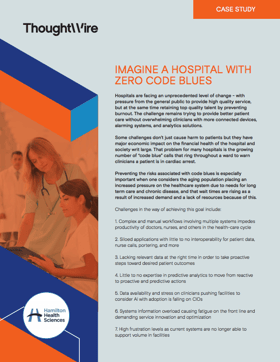I remember this elderly patient of mine who was transferred to our mental health unit because she was presenting very aggressive behaviour. It was progressive dementia that was being accompanied with bouts of violent episodes.
She came from a medical surgical floor where she just had her hips repaired. She was on 20 medications; 5 to manage her dementia and progressing condition, 10 to handle her pain and other issues that come with getting older, and 5 to manage the side effects of the other 15 pills. She was a falls risk for numerous reasons and needed frequent (close) observations. She was on lasix (furosemide, a strong diuretic) to help manage her blood pressure, and needed to frequently use the washroom; her bed alarm and sensor were always going off.
Everyone knew how vulnerable her condition was and the complexity of her treatment plan. The other nurses and myself were vigilant to make sure she received the care she needed and was as safe as possible. During her stay, she fell getting up to go to the bathroom, fracturing her repaired hips. The floors were just freshly mopped and despite the bed alarm going off, no one was fast enough to get to her room. The patient needed more surgery, adding 2 more weeks to her stay. During that time, she became even more compromised and ended up acquiring a hospital infection that took another 2 weeks to treat.
I often think back to this patient and wonder if I or my fellow nurses could have done anything more or differently for this patient. Could we have moved her bed to the room closest to the nursing station? No, we had a violent schizophrenic there who needed eyes on him at all times. Could we have told every housekeeper and janitor to wait and watch her until the floor dried in that room during their daily cleaning? No, they had entire wings and floors to clean, that's not their responsibility. I could've told her not to use the bathroom as often… have you ever told a violent person who needed to pee that they couldn’t? The truth is, despite all the technology we were using and all the vigilance we could muster, there wasn’t much more we could have done.
The truth is, despite all the technology we were using and all the vigilance we could muster, there wasn’t much more we could have done.
There are huge price tags associated with nosocomial infections - that is, infections picked up in a hospital - and preventable adverse events: the added length of stay, the additional treatments, the potential lawsuits, and many more factors all have costs. Many technologies on the market make bold claims about being able to reduce preventable adverse events (including nosocomial infections) but unless that technology involves cloning nurses and having more bodies on the floor, the ugly truth is that smart sensors and notifications can’t do it all. What’s even worse is that when solutions and technology are in place and negative events do take place, the clinicians feel responsible.
“I probably didn’t use the solution right” or “I’m not technically savvy enough” or “this patient is now more sick because I failed them.”
Leveraging IoT in Hospitals for enhanced Situational Awareness
What clinicians really need is more time, along with extra eyes and ears that can take situational context into consideration. Imagine if the patient’s smart bed was intelligent enough to know that the floors were wet, and kept the side railing up until the floors were dry. Imagine if that bed was also able to notify the patient that getting up at that moment would be dangerous. Solutions in this space really need to consider that these aren’t isolated workflows with single variables, and that they need to take a more holistic approach to care.
So many factors contribute to a patient successfully entering and exiting a hospital without major complications, technology has reached a point of maturity where we can now measure and monitor almost every step - yet gaps still exist. When considering solution design for new software implementations, healthcare leaders should prioritize real-time event-driven technology, end-to-end workflow visibility and orchestration, and a frictionless experience for practitioners. At ThoughtWire, we're dedicated to making the vision of smart IoT hospitals a reality, to help reduce outcomes like the one my elderly patient suffered. Practitioners can't be everywhere at once or have the time to consider every possible eventuality for patients, our solutions are architected with a deep empathy for this problem. ThoughtWire's smart hospital suite unlocks the potential of IoT so that clinicians can be sure they have the most comprehensive set of information and the right level of situational awareness to tackle all their patients needs.
Schedule a demo to see how our Smart Hospital applications can optimize the day-to-day lives of doctors, nurses and clinicians at work.





